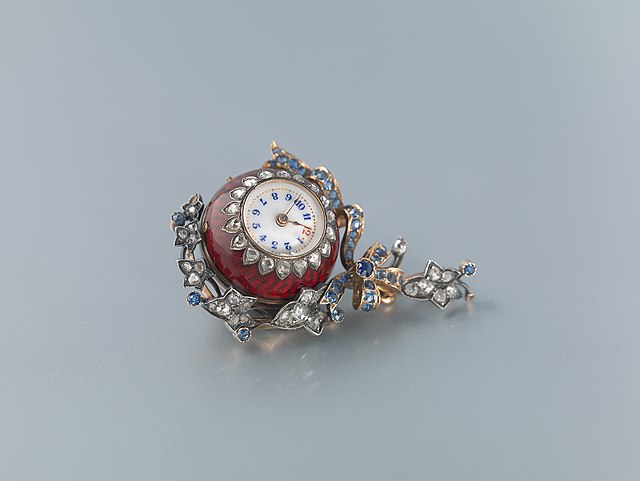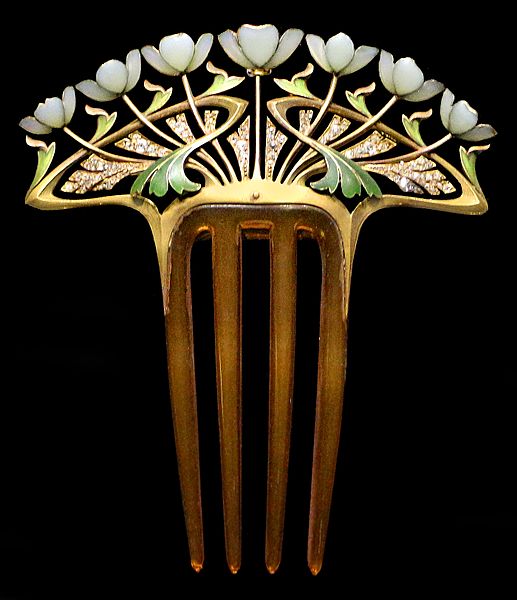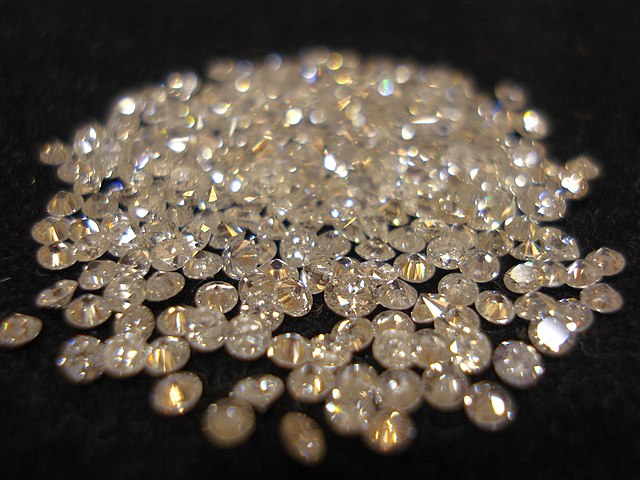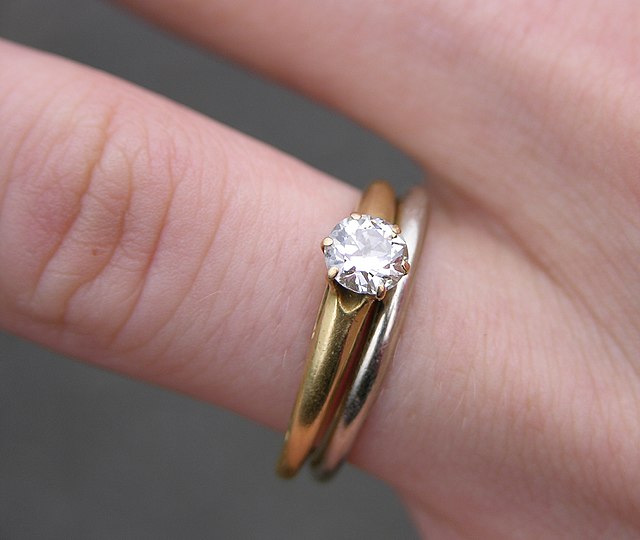A bracelet is an article of jewellery that is worn around the wrist. Bracelets may serve different uses, such as being worn as an ornament. When worn as ornaments, bracelets may have a supportive function to hold other items of decoration, such as charms. Medical and identity information are marked on some bracelets, such as allergy bracelets, hospital patient-identification tags, and bracelet tags for newborn babies. Bracelets may be worn to signify a certain phenomenon, such as breast cancer awareness, or for religious/cultural purposes.
A decorative gold charm bracelet showing a heart-shaped locket, seahorse, crystal, telephone, bear, spaceship, and grand piano.
Chain mail bracelet, in Byzantine weave, with silver-plated copper rings and green aluminium rings
Ancient Egyptian hinged cuff bracelet, c. 1479 –1425 BCE
Penannular bracelet, Oxus Treasure, Achaemenid period, c. 500 BCE
Jewellery consists of decorative items worn for personal adornment, such as brooches, rings, necklaces, earrings, pendants, bracelets, and cufflinks. Jewellery may be attached to the body or the clothes. From a western perspective, the term is restricted to durable ornaments, excluding flowers for example. For many centuries metal such as gold often combined with gemstones, has been the normal material for jewellery, but other materials such as glass, shells and other plant materials may be used.
A gold, diamonds and sapphires red guilloché enamel "Boule de Genève", a type of pendant watch used as an accessory for women. An example of an object which is functional, artistic/decorative, marker of social status or a symbol of personal meaning.
Hair ornament, an Art Nouveau masterpiece; by René Lalique; c. 1902; gold, emeralds and diamonds; Musée d'Orsay (Paris)
Diamonds
A diamond solitaire engagement ring








